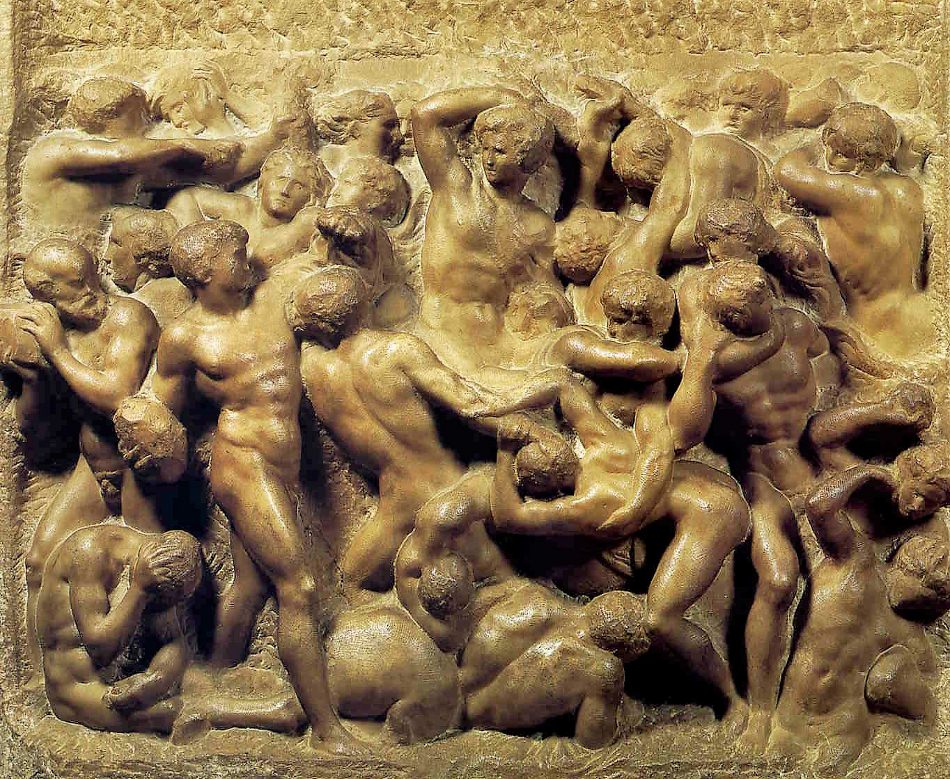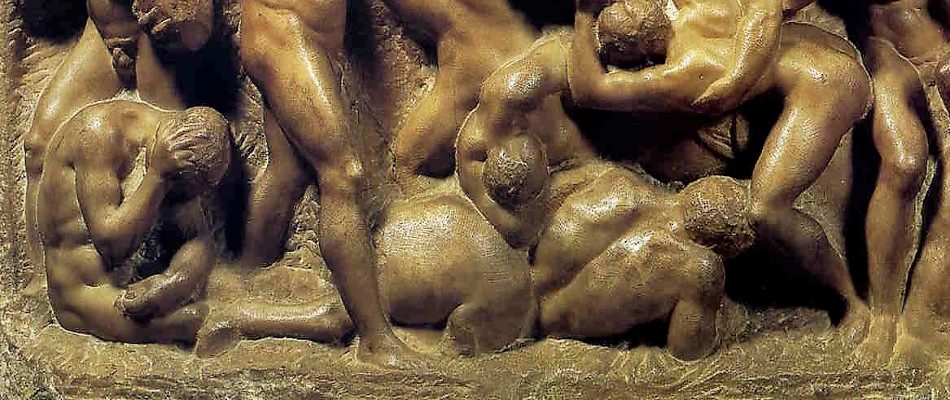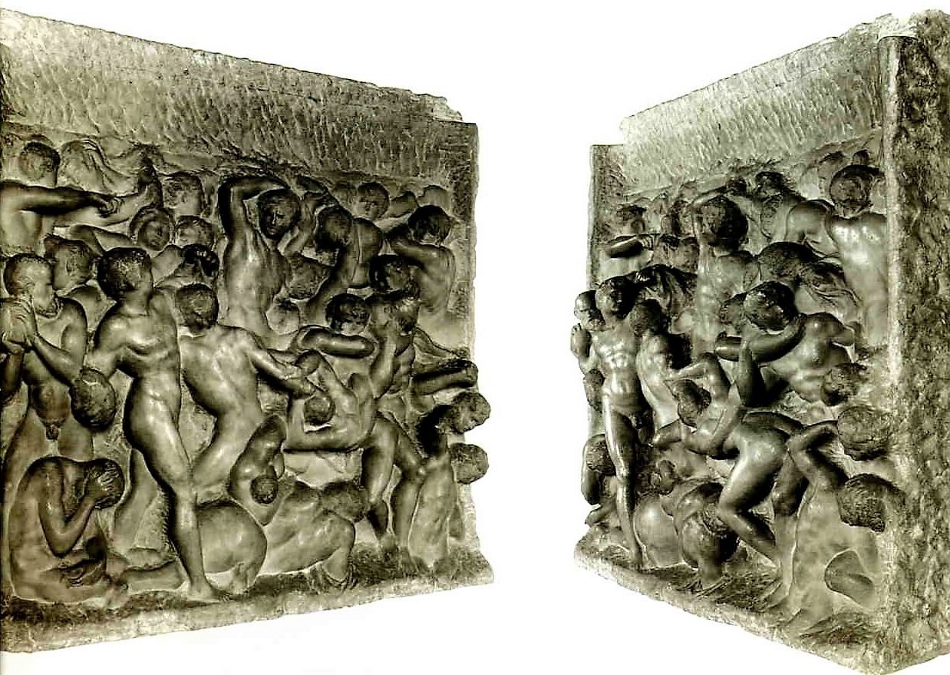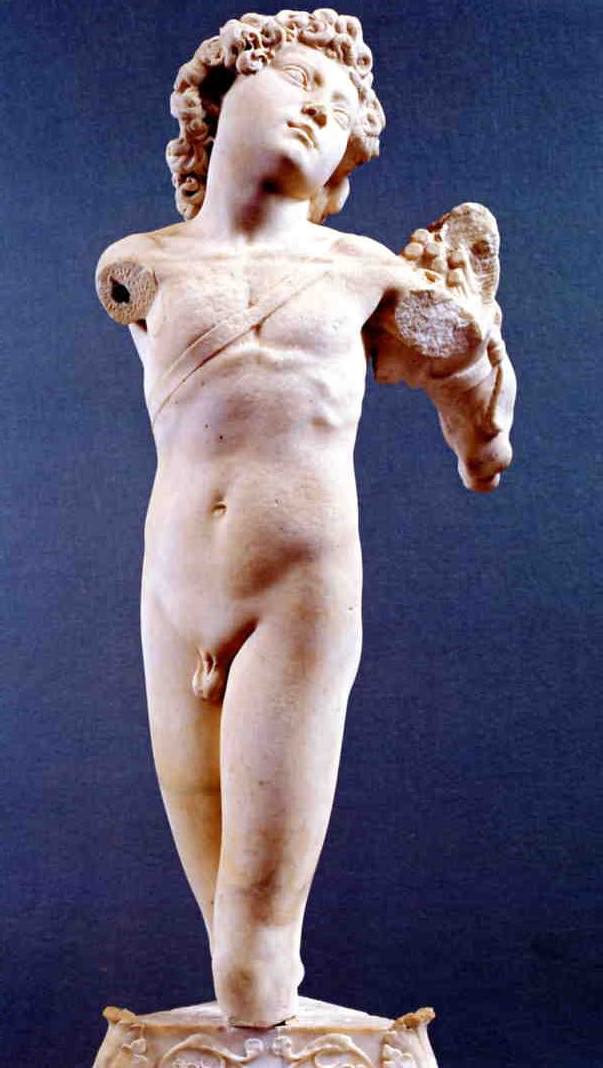Michelangelo's
'The Battle of the Centaurs'.
That a teenager, Michelangelo was seventeen when he produced this work, could execute such a sophisticated piece of sculpture is remarkable. The Battle of the Centaurs is a writhing mass of figures three-dimensionally carved into a marble block. The figures are layered in overlapping positions adding to the spatial depth of the work.
Michelangelo has created a scene of utter mayhem with the array of swirling figures locked in combat. The Battle of the Centaurs is based on a Roman myth related by the texts of Homer and Ovid focusing on the war between Centaurs and Lapiths. Michelangelo has portrayed the fight on a marble block in relief. In Greek mythology the Lapiths were an Aeolian tribe who battled with the Centaurs after a feisty wedding ceremony in which the drunken Centaurs attempted to kidnap the women, including the bride.
We can see the artists interest in the massive bulk of the naked male form, a theme that would serve Michelangelo well in future commissions, including his work in the Sistine Chapel. That the sculpture has an unfinished roughness adds to the overall mystery as we seek to make sense of the intertwining human narrative emerging from the stone.
In the renaissance era marble was an expensive commodity so where the young artist obtained the quite substantial block from is open to debate. The marble was a remnant of a larger sculpture from an artist’s workshop or an offcut from a cathedral work. Or his Medici masters obtained the marble for the young artist to work on, regardless of its origin Michelangelo has fully utilised the full width of the stone in this early work. The sculpture has no logical destination. However, the piece was certainly intended to be viewed in an upright position rather than displayed horizontally.
This side view of the stone relief gives some idea of the depth that Michelangelo has created in this carving. This is a demonstration piece highlighting the skill of the artist. The block stands alone and does not appear to be connected to any great work and in fact, we have no knowledge of any intended destination for the sculpture. Michelangelo would have been aware of earlier relief works by Donatello and the stone reliefs of antiquity, but this was a work that had no fifteenth-century comparison.
Personal Opinion:-
If this is a practice piece of sculpture by Michelangelo, he is certainly showing what he can do. In its rough state it shows the artists method of construction and the transition from marble block to a complex array of humanity.
The title is misleading, it is difficult to distinguish any centaur-like creature within the composition. However, the central lower figure does seem to have the rear of a horse by its side.
The imaginative process that has produced this work, alive with dynamism and movement, is awe-inspiring, a true masterpiece.
- Home
- Michelangelo
- Battle of the Centaurs







